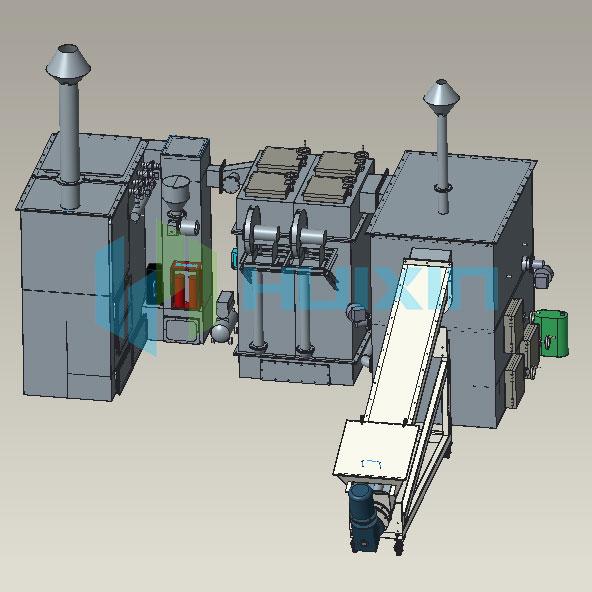Here are key features and considerations related to industrial waste incinerators
2023-12-26
An industrial waste incinerator is a facility designed to burn various types of industrial waste through a controlled combustion process. The primary purpose of industrial waste incineration is to reduce the volume of waste, eliminate or reduce the need for landfill disposal, and recover energy from the burning process. Similar to other waste incineration processes, industrial waste incinerators must adhere to strict environmental regulations to minimize emissions and ensure proper disposal of residues.
Here are key features and considerations related to industrial waste incinerators:
1. Types of Industrial Waste Incinerators:
- Rotary Kiln Incinerators: Utilize a rotating chamber to efficiently burn solid, liquid, or sludge-like waste.
- Liquid Injection Incinerators: Designed for the combustion of liquid waste, where the waste is injected directly into the combustion chamber.
- Grate-Type Incinerators: Suitable for burning solid waste materials placed on a moving grate.
2. Controlled Combustion Process:
- High Temperatures: Industrial waste incinerators operate at high temperatures to ensure the complete combustion of waste materials.
3. Energy Recovery:
- Heat and Power Generation: Incineration of industrial waste generates heat, which can be used to produce steam and drive turbines for electricity generation. This energy recovery aspect enhances the economic viability of waste incineration.
4. Emission Control Systems:
- Advanced Controls: To minimize the release of pollutants into the air, industrial waste incinerators are equipped with advanced emission control systems. These may include scrubbers, baghouses, electrostatic precipitators, and selective catalytic reduction (SCR) systems.
5. Waste Types:
- Diverse Waste Streams: Industrial waste incinerators can handle a wide range of waste types, including hazardous waste, medical waste, industrial sludge, and certain types of solid waste.
6. Waste Preprocessing:
- Sorting and Treatment: In some cases, industrial waste may undergo preprocessing to remove recyclables or treat hazardous components before incineration.
7. Regulatory Compliance:
- Environmental Regulations: Industrial waste incinerators must comply with stringent environmental regulations at local, regional, and national levels. Compliance is crucial to ensuring that emissions meet acceptable standards.
8. Monitoring and Reporting:
- Emission Monitoring: Continuous monitoring of emissions is typically required, and facilities must regularly report their data to regulatory authorities.
9. Residue Management:
- Ash Disposal: After the incineration process, the remaining material is ash. Proper disposal and management of the ash are essential to prevent environmental contamination.
10. Public Perception:
- Community Engagement: Similar to other waste incineration facilities, industrial waste incinerators can face opposition from communities concerned about air quality, health impacts, and environmental consequences. Public engagement and transparency are crucial to address these concerns.
11. Alternatives to Incineration:
- Waste Reduction: While incineration can be part of an integrated waste management strategy, efforts should also focus on waste reduction, recycling, and sustainable waste treatment methods.
12. Lifecycle Analysis:
- Environmental Impact Assessment: A comprehensive lifecycle analysis is necessary to evaluate the overall environmental impact of industrial waste incineration, considering factors such as resource use, energy consumption, and emissions.
Industrial waste incineration is a complex process with potential benefits and challenges. The effectiveness and sustainability of such facilities depend on the technology used, regulatory frameworks, and adherence to best practices for environmental protection and public health. The waste management hierarchy, emphasizing waste reduction, reuse, and recycling, should guide decisions regarding waste treatment methods.



